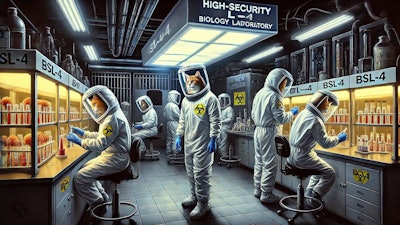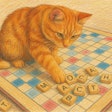
As the COVID-19 coronavirus fades into ubiquity, the potential for another pandemic looms, and pets could play a role in transmitting it. On CNBC’s Make It, Bill Gates said he believes another pandemic is likely within the next 25 years based on a growing body of scientific evidence. At the same time, researchers suggest pets could be an overlooked mixing vessel for pathogens crossing from wildlife and livestock to humans. Those species-hopping diseases could become the next pandemic.
The COVID-19 pandemic boosted pet ownership and, with it, the pet food industry. However, a pandemic spread via pets would have the opposite effect. Dog, cat and other pet food companies can play a role in preventing the next pandemic by supporting conservation and zoonotic disease research.
Potential for another pandemic
Reducing the probability of a pandemic depends on many factors, but many of those variables trend toward a greater chance of disease. For example, wildlife may harbor diseases with the potential to become zoonotic. As humans encroach on ecosystems, the probability of a pathogen passing from wildlife to livestock or humans increases. Deforestation, especially in the tropics, has accelerated dramatically in the past century, opening new pathways for diseases to cross the species barrier. In the Proceeding of the National Academy of Sciences, researchers calculated that the probability of experiencing a pandemic within one’s lifetime is approximately 38%, which may double in coming decades.
One disease has been testing that potential to go pandemic for two decades. Avian influenza is already spreading among people, livestock and wild animals. In Sept. 2024, another human case of A(H5) avian influenza was confirmed in Missouri, WATTPoultry reported. However, unlike other human cases, the U.S. Centers for Disease Control and Prevention (CDC) reported that the patient had no known contact with animals. Epidemiologists worry that avian influenza could mutate and become more virulent in humans and other non-avian animals.
Dogs and cats could become that mixing vessel that allows avian influenza to become a virus more capable of spreading easily among humans, Jane Sykes, professor of medicine and epidemiology at UC Davis School of Veterinary Medicine, told the L.A. Times. Consider a situation where an infected bird dies in a suburban backyard or city park. Dogs and cats eat dead animals despite owners’ best intentions. Avian influenza could mutate within those pets, spread to their owners and become the seed of a pandemic.
The probability of a diseased pigeon passing a pathogen to a pet is low, she said. Yet, the sheer number of pets worldwide increases the potential for pandemic. Similarly, people cuddle with cats and dogs in ways that no farmer does with a chicken. That close contact makes disease transmission more likely. Although the probability is minuscule, the potential cost of the risk is high.
Pet don’t need to eat wild birds to get avian influenza. Pet food ingredients can spread the disease.
Avian influenza and pets
On July 25 and 31 of 2023, health officials confirmed highly pathogenic avian influenza A(H5N1) infections in two cat shelters in Seoul, South Korea. At one of the cat shelters in South Korea, 38 out of the 40 infected cats died within a month. The shelter cats had all been kept indoors, so it seemed unlikely that wild birds had spread the pathogen to the cats. Instead, the virus may have spread to the cats through their food. Investigators with South Korea’s Ministry of Agriculture, Food and Rural Affairs (MAFRA) detected influenza A(H5N1) virus in cat food from one of the shelters. The cat foods were Balanced Duck and Balanced Chicken manufactured by Nature's Raw at its facility in Gimpo, west of Seoul. The Ministry stated that the company had failed to follow necessary sterilization steps since May 25 due to an equipment malfunction. The virus may have entered the cat food stream during an outbreak of the virus on South Korean poultry, including duck, farms that lasted until April 2023.
A team of researchers examined this outbreak and published a summary in Nature Communications, along with suggestions for controlling future cross-species disease transmission.
“The influenza A(H5N1) outbreaks in the cat shelters in South Korea, along with an increasing number of reports of influenza A(H5N1) infection in mammals, suggest the need to enhance the effectiveness of infectious disease surveillance and prevention in any settings where a group of potentially susceptible animals are kept in close contact,” they wrote. “This is particularly important for groups of animals that typically are not covered by regulatory efforts aimed at maintaining or improving animal health and welfare standards. These animal groups could not only provide environments for cross-species viral transmission, promoting zoonotic risk, but could also serve as sentinels for detecting such events, thereby offering opportunities to assess and then mitigate such risk.”
H5N1 avian flu can spread to and kill humans. Between 2003 and 2023, the World Health Organization received 882 reports of human infection with H5N1 bird flu in 23 countries. Of these, 461 cases were fatal. A pandemic infecting both people and pets could be devastating.
Even the rumor that pets could transmit the SARS-CoV-2 coronavirus led people to abandon their dogs and cats in the streets in some regions, as the BBC reported. What if a zoonotic disease erupted that could spread from pets to people and vice versa? The World Health Organization (WHO) prepared for just that scenario with a simulation exercise in 2017, one of an annual series of drills called Exercise Crystal.
WHO doctors used the exercise to test the outbreak responses of 30 countries and area in the Western Pacific region. The simulation supposed that a previously unknown illness began spreading among cats. Meanwhile, cat owners and veterinarians also start reporting flu-like symptoms to their doctors. By the end of the hypothetical outbreak, cat flu had infected hundreds of people in participants’ own countries and spread internationally.
Pet food industry action against pandemic
Bird flu is already out of Pandora’s box of pathogens and provides an example of how a zoonotic disease can spread. Pet food companies can help keep avian influenza from becoming the next human pandemic.
Biosecurity and ingredient sourcing: As the case in South Korea makes obvious, pet food companies must ensure that poultry ingredients are sourced from farms with strict biosecurity measures to minimize the risk of infected birds entering the supply chain.
Collaborative research: Beyond their own products, pet food companies could fund or collaborate on research into avian influenza transmission, particularly how the virus might spread among wildlife, poultry, pets and people.
Sustainable farming: By supporting sustainable, ethical farming practices that reduce crowding and improve animal health, pet food companies can help lower the risk of outbreaks among livestock, particularly poultry. Encouraging regenerative agriculture may help restore ecosystems or reduce pressure on the environment, including deforestation.
Safe food handling: Pet food manufacturers could promote avian-influenza-specific safe food handling and preparation guidelines for pet owners, retailers and others in the supply chain. These guidelines could include proper storage, cooking, and hygiene practices to prevent the transmission of avian influenza through contaminated products.
These proactive steps may help pet food companies mitigate the risk of avian influenza becoming the next pandemic that Bill Gates fears.


















